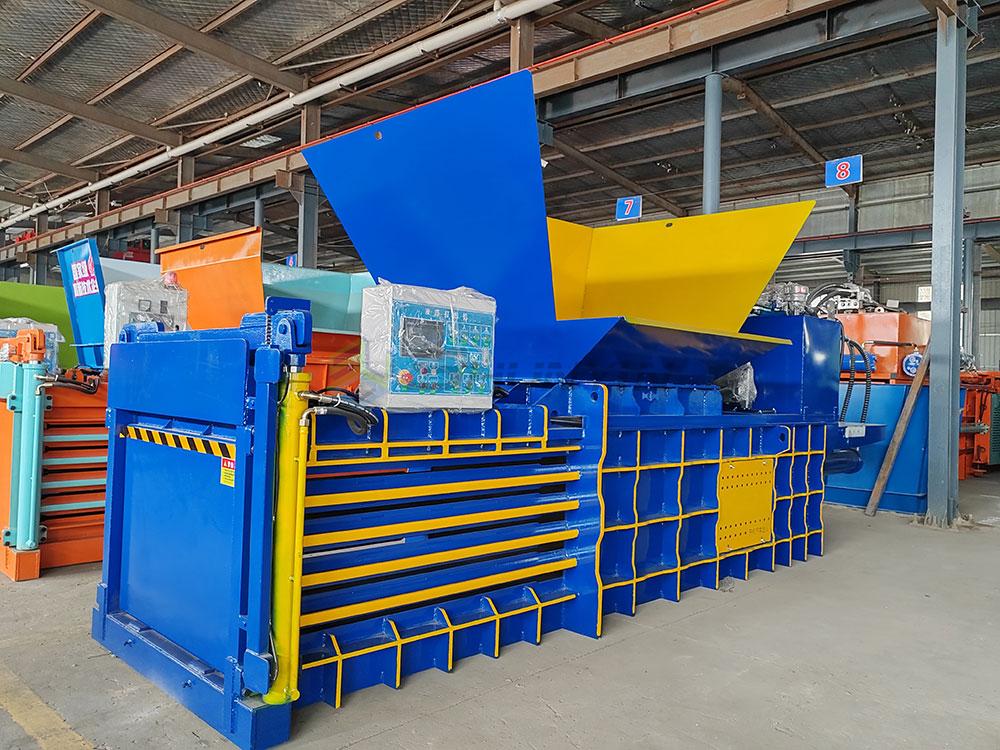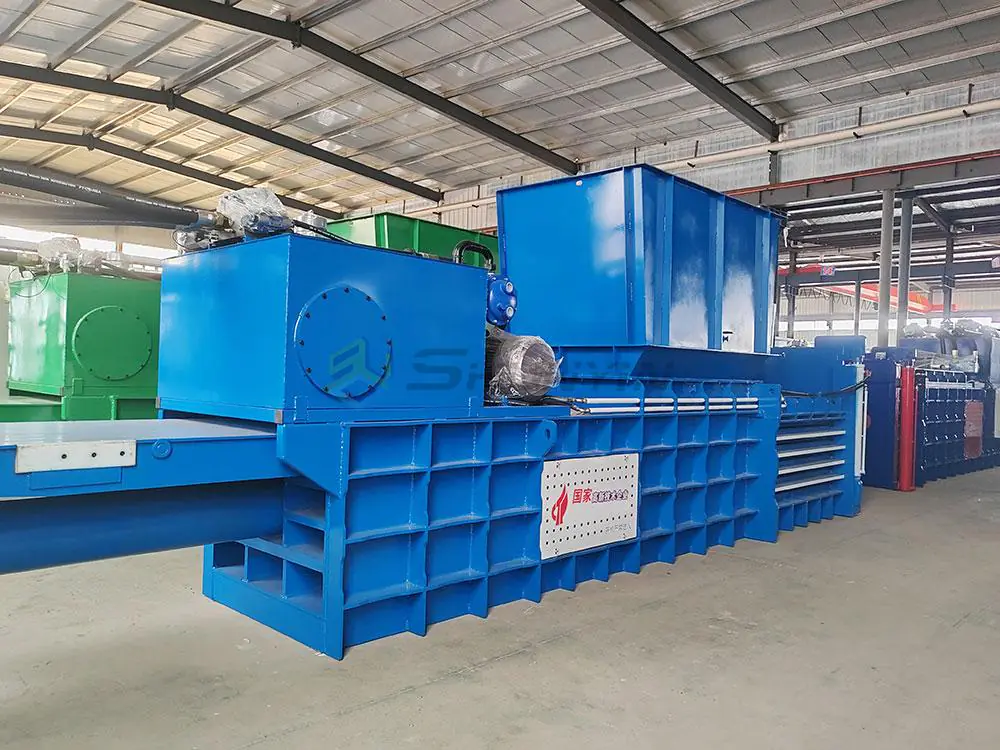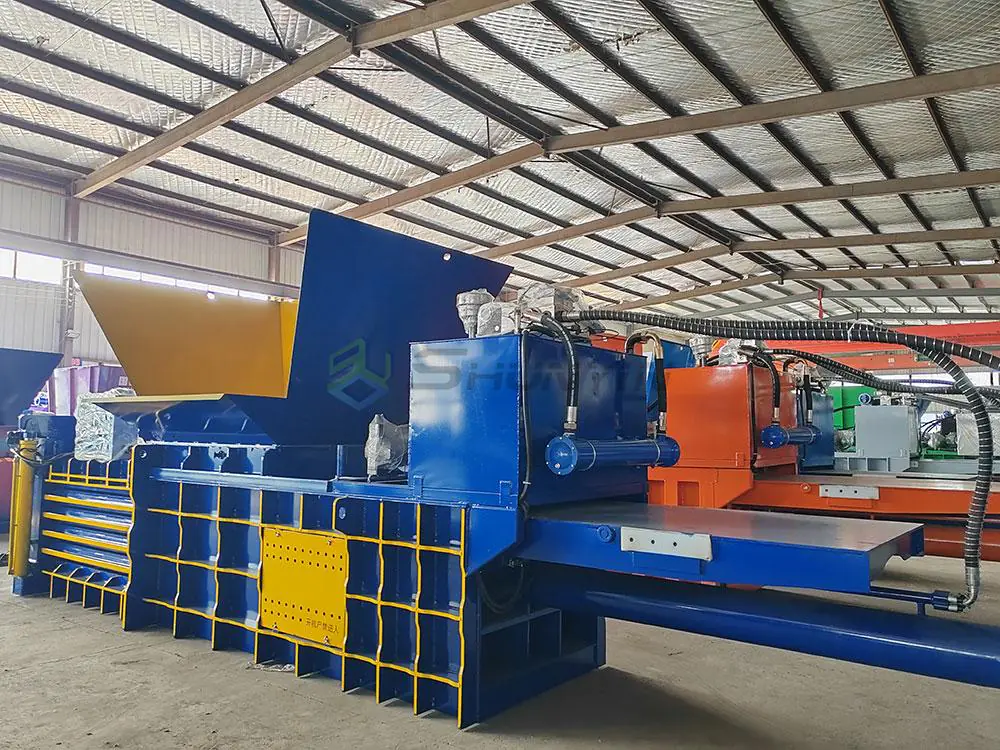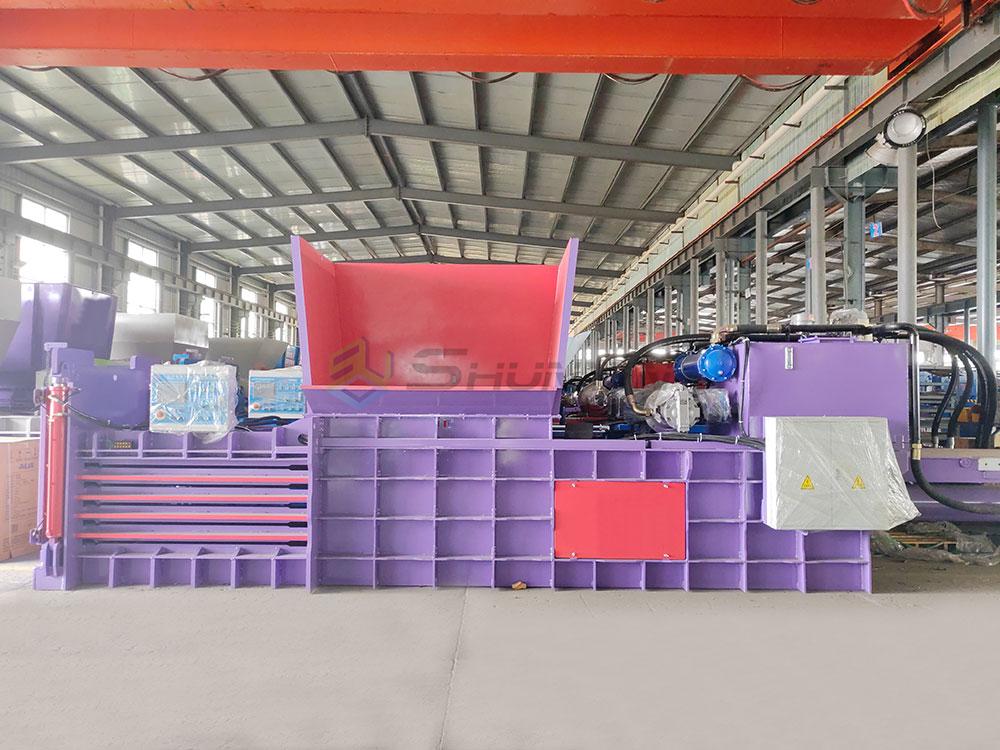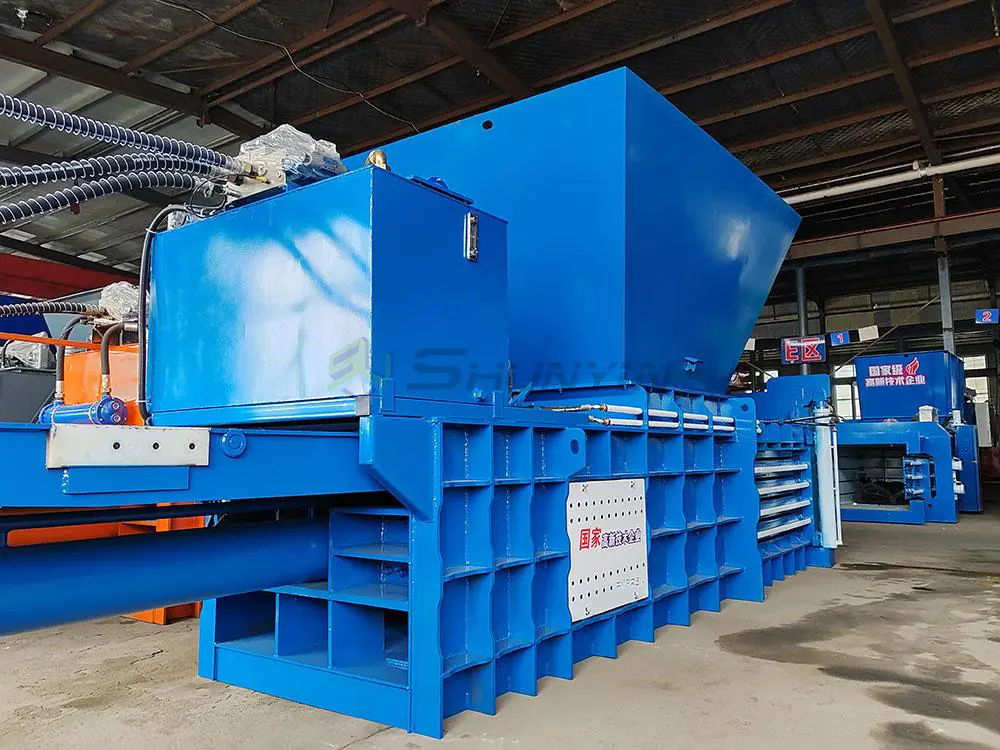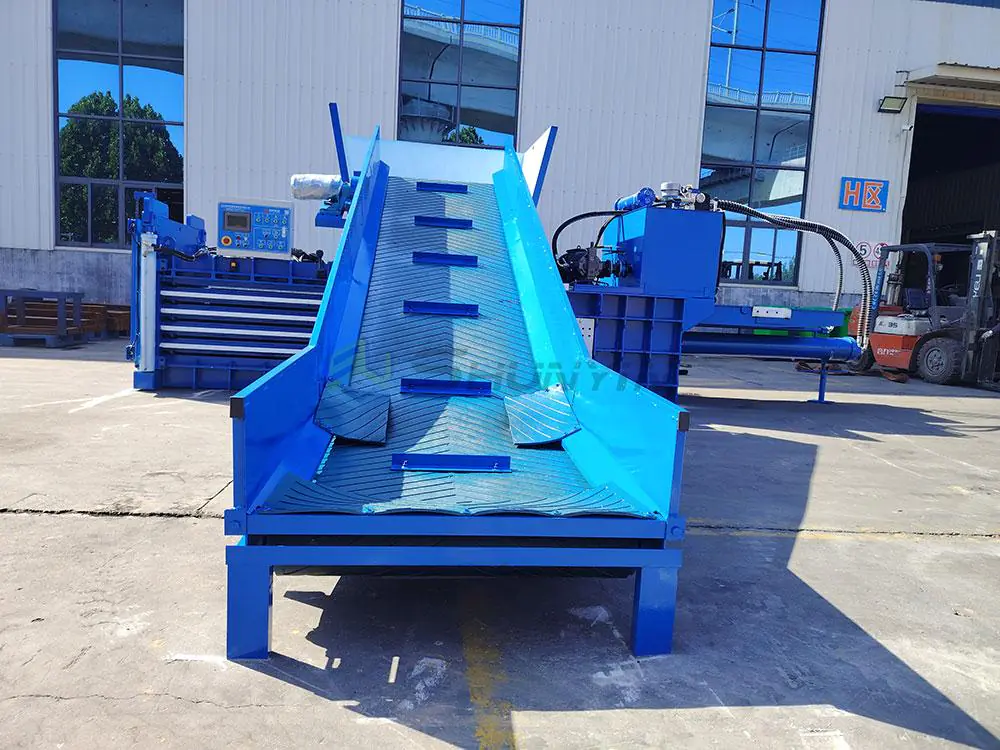
A grocery chain was paying $14,000 monthly in cardboard disposal fees – until we retrofitted their backroom with paper balers. The transformation shocked even their accountants.
Paper balers compress cardboard, office paper, and packaging materials into dense blocks using 10-25 tons of hydraulic force. These compact bales reduce storage space by 87%, lower transportation costs by 55-75%, and increase material resale value by 20-40% through quality preservation. They serve as the critical link between waste collection and paper recycling mills.
But the true value lies beyond basic compression. Let’s dissect paper balers’ hidden operational impacts.
What Is The Function Of A Baler?

We’ve witnessed warehouses wasting 310 hours/year manually breaking down boxes. Here’s how balers revolutionize workflow:
Balers perform three core functions: 1) Volume reduction through hydraulic compression (achieving 15:1 ratio) 2) Material standardization into 500-900kg bales 3) Contamination prevention via enclosed processing. Advanced models integrate moisture sensors and automatic lubrication for continuous operation – crucial for high-volume paper recycling.
Manual vs Baler-Assisted Workflow
| Task | Manual Processing | Baler Processing | Improvement |
|---|---|---|---|
| Box Breakdown | 2 workers @ 45s/box | 1 worker @ 4s/box | 91% faster |
| Storage Space | 5m³/ton | 0.7m³/ton | 86% saving |
| Material Loss | 9-12% | 1-3% | 8-point gain |
| Freight Cost | $380/ton | $120/ton | 68% cheaper |
| OSHA Compliance | 62% | 98% | +36 points |
A Japanese electronics retailer noted: "After installing two horizontal balers, we eliminated 3 daily compactor runs. Yearly savings: $216,000 in logistics alone."
What Is A Paper Baler?

When a Toronto library’s recycling program failed, the culprit was using general balers. Paper requires specialized handling:
Paper balers are hydraulic machines optimized for cellulose materials. They feature corrugated compression plates (prevents paper tearing), pressure-sensitive cycle controls, and static-resistant chambers. Key components include feed openings (70-150cm width), dual pre-compression rams, and programmable bale density settings (200-800kg/m³).
Paper Baler Specifications by Type
| Model | Pressure | Bale Size | Throughput | Ideal Users |
|---|---|---|---|---|
| Vertical | 8-12 tons | 50x50x80cm | 1.2t/hour | Offices Stores |
| Horizontal | 18-25 tons | 120x70x60cm | 4.5t/hour | Distribution Centers |
| Closed-End | 20-30 tons | 150x90x90cm | 8t/hour | Recycling Mills |
| Auto-Tie | 15-22 tons | 100x60x60cm | 3t/hour | E-commerce Warehouses |
"Switching from plastic to paper-specific balers increased our OCC recovery rate from 76% to 93%," reported a corrugated box manufacturer. "Fiber structure preservation was the game-changer."
What Is The Meaning Of Paper Baling?
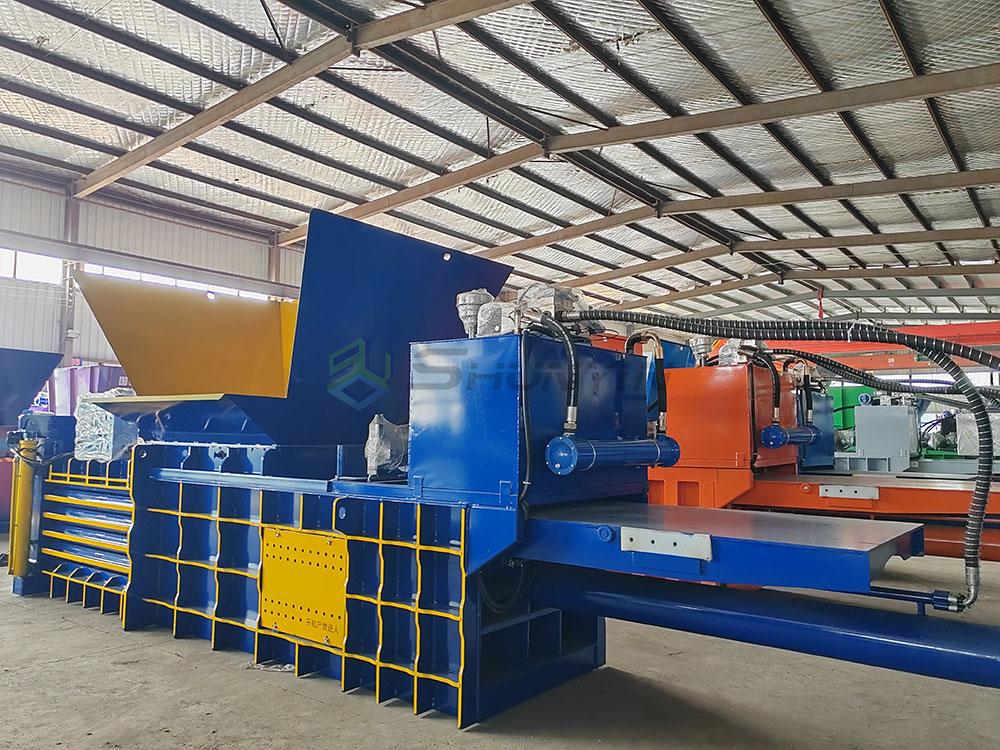
A client once thought baling meant "throwing paper in a box." Reality differs dramatically:
Paper baling transforms loose, low-value paper waste into standardized commodities. It involves compression (achieving ≥500kg/m³ density), uniform dimensioning (for automated handling), and contamination control (max 2% non-paper content). Baled paper gains commodity status – traded globally with price tracking on indexes like FOEX.
Baling Impact Cycle
| Stage | Unbaled Status | Baled Value |
|---|---|---|
| Collection | Mixed waste stream | Segrated material |
| Processing | Labor-intensive | Automation-ready |
| Transportation | High volume cost | Optimized shipping |
| Market Entry | Local buyers | Global commodity traders |
| Pricing | $35-75/ton | $105-220/ton |
A North American recycler shared: "Baling let us bypass local middlemen. We now sell directly to Korean mills at 3x previous pricing through commodity exchanges."
What Is The Purpose Of Baling?

When a client’s paper waste caught fire (again), insurance demanded action. Baling became their lifeline:
Baling serves four key purposes: 1) Economic: Lowers handling costs by 60% 2) Safety: Reduces fire risks via compact storage 3) Environmental: Enables efficient recycling 4) Compliance: Meets waste management regulations. Proper baling turns liabilities into traceable assets meeting global recycling standards.
Baling’s Multi-Sector Benefits
| Industry | Problem Solved | Baling Benefit | ROI Time |
|---|---|---|---|
| Retail | High disposal fees | 75% cost reduction | 6 months |
| Printing | Storage constraints | 90% space saving | 8 months |
| Logistics | Material spillage | 95% loss prevention | Immediate |
| Schools | Safety violations | OSHA compliance | 3 months |
| Mills | Contaminated input | Enhanced purity | Continuous |
"Since baling," shared a textbook publisher, "we’ve had zero paper-related OSHA incidents and secured LEED certification – impossible with loose storage."
Conclusion
Paper balers transform waste liabilities into profit centers while safeguarding operations. Achieve 65-90% cost reductions and unlock premium recycling markets through proper baling implementation. Ready to revolutionize your paper waste flow? Contact our baler experts for a customized system design and ROI projection.


